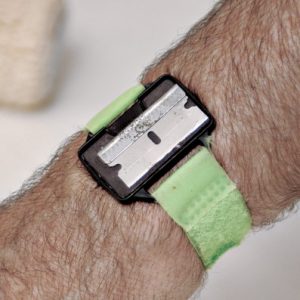Tools for Wallpapering
You’ll need some special tools and work surfaces to apply your wallcovering.

You’ll need some special tools and work surfaces to apply your wallcovering:
- A spirit level will tell you whether walls and wallcovering edges are plumb. Be sure to plumb the leading edge of the first strip of wallcovering. A 4-ft. level with metal edges can double as a straightedge when trimming selvage (manufactured edges).
- Your pasting table should have a washable top about 3 ft. by 6 ft. Avoid covering it with newspaper because newsprint may bleed. To protect the top from scarring during cutting, cover the tabletop with hardboard or use a zinc cutting strip. (If you don’t have a suitable table, lay a sheet of smooth, void-free plywood over sawhorses.)
- Have a 16-ft. retractable tape measure for measuring and marking.
- A razor knife with replaceable blades gives the cleanest cuts. Don’t be stingy about replacing blades during use because dull blades can rip wallpaper. A professional may use 200 to 300 blades on a big job. Some pros prefer single-edge razor blades, though knives with snap-off blades are popular, too.
 This clever magnetic bracelet keeps a single-edge razor blade handy. A sharp blade is essential, especially if you’re working with prepasted wallcoverings soaked in water. Wetted paper will snag a dull blade and rip easily. Blades are far cheaper than wasted wallcovering. (This wristband has been discontinued, but the Handy Band is a good alternative) |
- Shears help you rough-cut from a roll.
- Paste brushes spread pastes on backing—or on walls, in some cases.
- A roller and pan are needed to spread vinyl paste, which is too heavy to brush on. Ask your supplier how long the nap of the roller cover should be.
- A smoothing brush, with soft bristles, will smooth out the wallcovering paste.
- A wallpaper smoother smooths vinyls, liners, and other heavy materials. It is also handy for flattening the occasional paste lump.
- A seam roller spreads glue along the edges of the strips to ensure that seams will stick well. Caution: Seam rollers are not generally recommended for delicate or finely textured papers or grasses.
- A 6-in. taping knife, also called a joint knife, is useful for filling low spots and scraping off high spots in a wall. Also use this knife to press the wallcovering snugly against the trim before cutting away excess paper.
- A sponge and water pail are handy for wiping excess paste off the pasting table, trim, and most wallcovering surfaces. In general, the sponge should be just damp. Change the water in your pail often. To avoid creating a sheen along the seams, wipe entire strips, not just the edges.
- Other useful equipment includes a sturdy fiberglass stepladder; a long, straight board for detecting irregularities in walls and ceilings; and plenty of clean, soft rags. If you use a prepasted wallcovering, you’ll also need a water tray in which to soak the strips to activate their adhesives.





